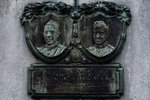
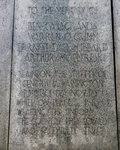
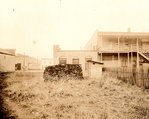
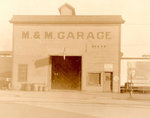
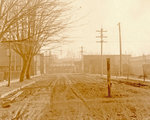
Monday marks 100 years since Centralia’s darkest day.
There’s a lot to mourn this weekend, there’s even more to think about, and maybe even a thing or two to learn.
On Nov 11, 1919, simmering hostility between fed-up workers and Bolshevik-fearing veterans erupted into gunfire, bloodshed, mob violence and a lynching under cover of darkness.
At the time, as newspapers and city leaders raged against the radical Industrial Workers of the World, many called that day the Centralia Massacre. These days, as we look back at the years of pent-up hostility and demonization that boiled over that day, and the years of repression, incarceration and acrimony that followed, the preferred term is Centralia’s Armistice Day Tragedy.
The lines of class warfare were bitterly drawn in the months and years leading up to that day. On one side were the IWW (or Wobblies), often loggers sick of long, dangerous, six-day weeks with little pay. Hungry for change, they called for a complete overthrow of the capitalist system. On the other side were business interests and newly returned veterans with heavy-handed demands of “100 percent Americanism.” The battle led to six deaths a century ago:
Four veterans: Warren Grimm, Dale Hubbard, Ben Cassagranda and Arthur McElfresh, shot dead as their parade marched past (and members were beginning to ransack) Centralia’s IWW hall;
One logger and militant IWW member, Wesley Everest, who, as he was fleeing into the waters of the Skookumchuck River, turned to shoot and kill Hubbard. Everest was beaten, dragged to jail, then hauled out of his cell in the dark of night and lynched from the Mellen Street bridge;
John Haney, a hastily deputized member of a posse sent to hunt down suspected IWW members in the woods (as a Chronicle headline put it, “town scoured for skunks”). Haney was killed several days after the initial firefight by members of his own posse, who mistook him for a Wobbly.
The IWW hall was wrecked that Nov. 11. The IWW members in it, who had taken up arms to defend their hall from the latest in years of harassment, were put on trial and sentenced to decades in prison.
The story is long, complex and heartbreaking. If you know anything at all about it, you know there is so much more to the story than can be told here.
That’s probably why there have been shelves full of books written about the incident — some fiction, some fiery polemics.
A few authors have tried to be even-handed, spending years on fact-based tellings with enough context to help us see the bigger picture and trends that led to the bloodshed.
This weekend, the author of one of the best books about that deadly day will be in Centralia to talk about what we can learn about today from the bloodshed of the past.
Tom Copeland is author of “The Centralia Tragedy of 1919: Elmer Smith and the Wobblies.”
The book examines the life of one of the key figures in the tragedy, and one of Centralia’s most intriguing characters: Elmer Smith, a fiery red-headed lawyer with a heart for the working class.
Smith had been a farmer, homesteader, logger and miner before hanging up his shingle in downtown Centralia as an attorney. He liked representing the downtrodden working man, helping laborers and loggers sue for back wages, injuries and other claims.
Smith was a confidant of the Wobblies, and they had reasons to seek his advice. In the fall of 1919, the newly returned World War I veterans and the business leaders of town began planning to ransack the recently reopened Centralia IWW hall — they had already closed down the hall four times in the years before, including a 1918 raid after a Red Cross parade.
It was an open secret in town that the newest IWW hall would be raided after the Nov. 11 Armistice Day parade. Smith, who had an idealistic faith in the law to protect the rights of all, told the Wobblies that they had a right to defend themselves if their hall was threatened.
“Smith’s major failure was his misjudgment of how serious the situation was in Centralia,” Copeland writes in his book, saying Smith’s advice was a major contributor to the tragedy that followed.
After the gunfire and lynching of Nov. 11, Wobblies were arrested and convicted after a trial that was heavy with fear and intimidation.
Smith dedicated the rest of his life to publicizing the injustice of the case and fighting to see the Wobblies of Centralia freed.
I talked with Copeland this week about his book and this weekend’s 100th anniversary of Centralia’s tragedy. (Copeland, 69, is visiting Washington from his home in Minnesota.)
He told me that the book began in a strangely personal way in 1970, when he was a 19-year-old student at Macalester College in St. Paul. He was reading up on labor history and the IWW. He discovered in passing that a guy named Elmer Smith was a major part of the Centralia story, and he happened to have gone to Macalester College as well.
What began as an oral history project, talking to Smith’s former classmates, turned into 25 years of research and writing.
“I would describe him as someone who is very principled, brave, somewhat naive, a fighter for the working class,” Copeland said about Smith. “He never gave up. He was optimistic to a fault ... I just admire someone who can persist over a long period of time, doing what he thinks is right and not backing down.”
The fight took a heavy toll on Smith’s family and health. His political enemies managed to get him disbarred (years later, he successfully was reinstated, with letters of support from across the political spectrum.) Smith eventually died of a bleeding ulcer at age 44. His funeral service was packed with an overflowing crowd of thousands of working-class friends and admirers — the rain-soaked funeral procession stretched out for three miles.
Smith is now memorialized on Centralia College’s clock tower, and his life story is well worth reading. Copeland’s book is still in print, and I’d urge you to read it. You’ll come away with a deeper understanding of the powerful forces that collided in 1919, deepening wounds and divisions that in some ways are still raw. You’ll also come away marveling at the life of Elmer Smith, one of Centralia’s most notable residents.
If you can, come down to hear Copeland speak this Sunday at the Centralia Depot as part of Centralia’s observance of the 100th anniversary of its Armistice Day Tragedy.
The six dead men, who fought on different sides of a home-front battle, deserve to be remembered. Even more, the forces that pushed them to clash and kill deserve to be understood — and perhaps even healed.
***
Brian Mittge’s community column appears in The Chronicle each Saturday. Drop him a line at brianmittge@hotmail.com.